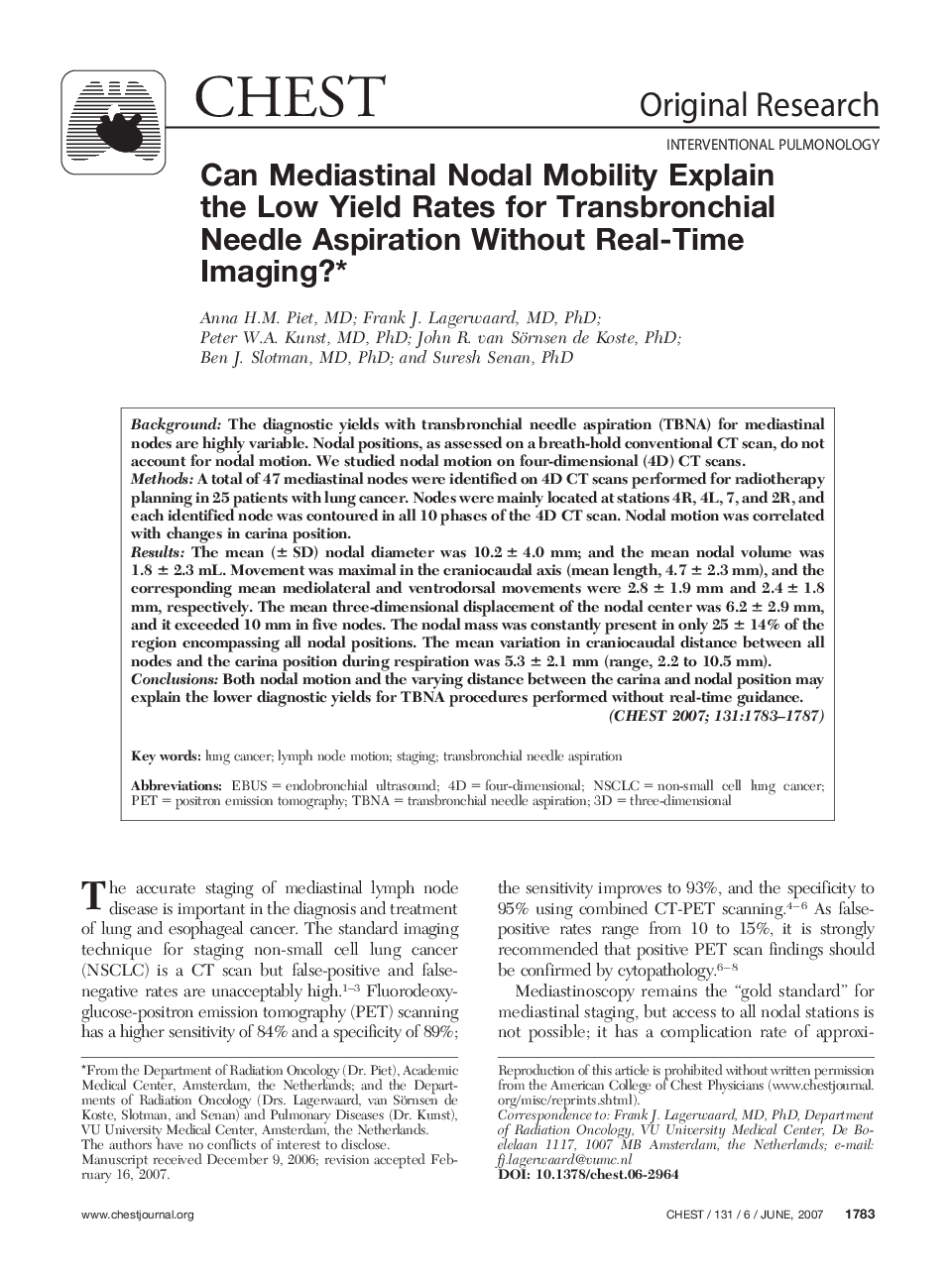| Article ID | Journal | Published Year | Pages | File Type |
|---|---|---|---|---|
| 2906509 | Chest | 2007 | 5 Pages |
BackgroundThe diagnostic yields with transbronchial needle aspiration (TBNA) for mediastinal nodes are highly variable. Nodal positions, as assessed on a breath-hold conventional CT scan, do not account for nodal motion. We studied nodal motion on four-dimensional (4D) CT scans.MethodsA total of 47 mediastinal nodes were identified on 4D CT scans performed for radiotherapy planning in 25 patients with lung cancer. Nodes were mainly located at stations 4R, 4L, 7, and 2R, and each identified node was contoured in all 10 phases of the 4D CT scan. Nodal motion was correlated with changes in carina position.ResultsThe mean (± SD) nodal diameter was 10.2 ± 4.0 mm; and the mean nodal volume was 1.8 ± 2.3 mL. Movement was maximal in the craniocaudal axis (mean length, 4.7 ± 2.3 mm), and the corresponding mean mediolateral and ventrodorsal movements were 2.8 ± 1.9 mm and 2.4 ± 1.8 mm, respectively. The mean three-dimensional displacement of the nodal center was 6.2 ± 2.9 mm, and it exceeded 10 mm in five nodes. The nodal mass was constantly present in only 25 ± 14% of the region encompassing all nodal positions. The mean variation in craniocaudal distance between all nodes and the carina position during respiration was 5.3 ± 2.1 mm (range, 2.2 to 10.5 mm).ConclusionsBoth nodal motion and the varying distance between the carina and nodal position may explain the lower diagnostic yields for TBNA procedures performed without real-time guidance.
